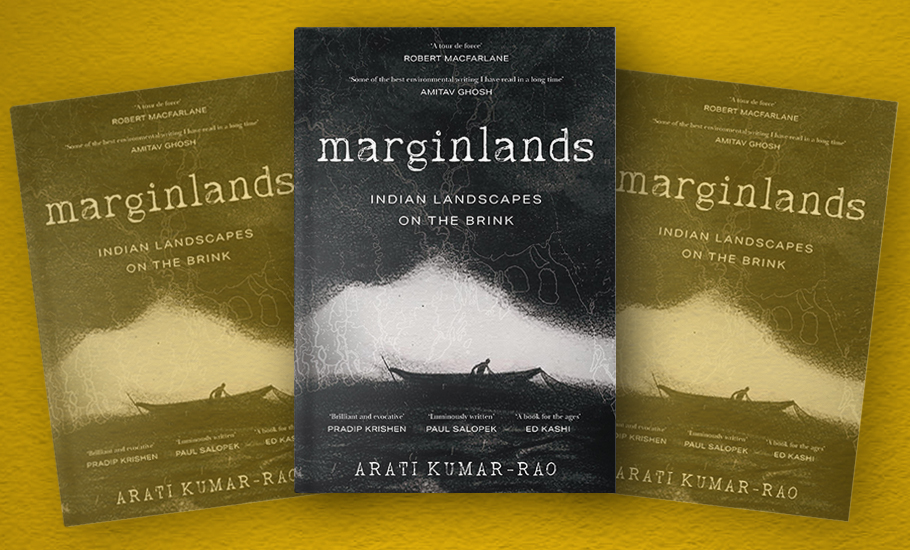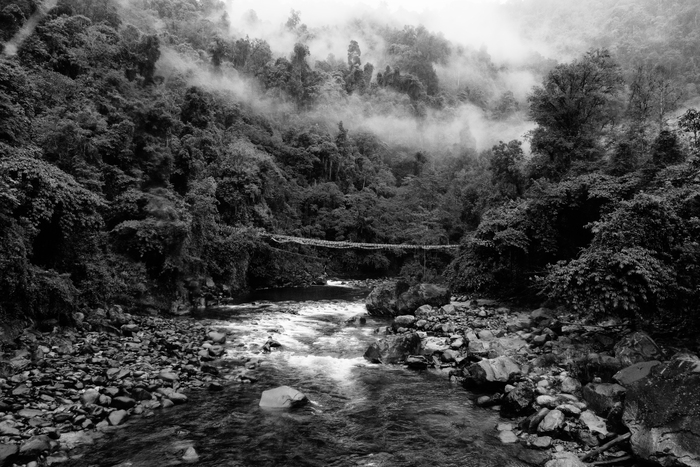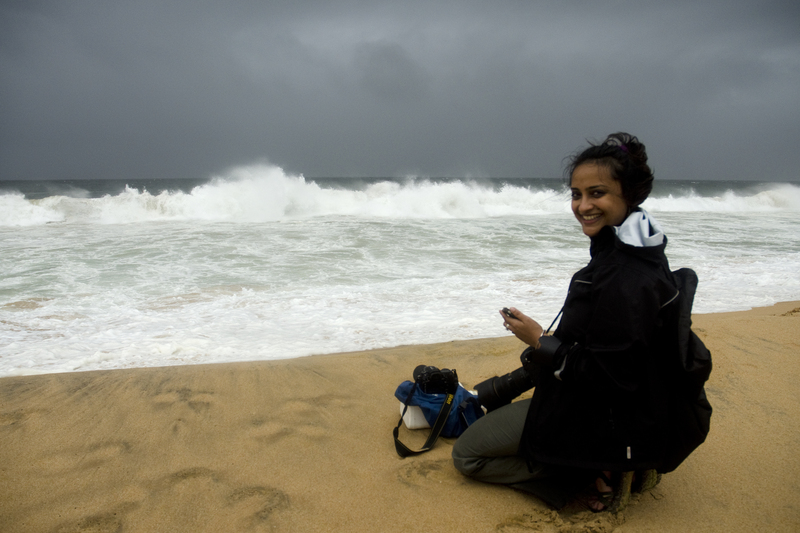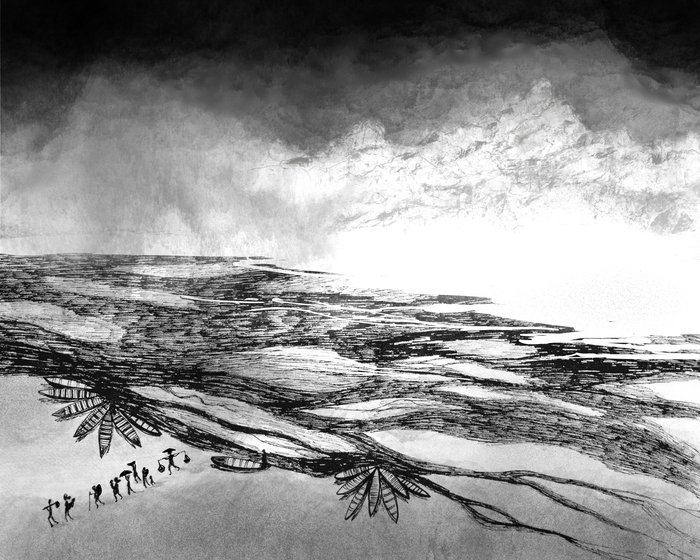
Marginlands review: How India has brought its landscapes to the brink of loss, devastation

Landscapes are intertwined with lives and livelihoods. Their loss leads to a requiem for a way of life. A requiem for a dream. Their destruction claims lives, leaving behind ‘funereal momento mori’. In Marginlands: Indian Landscapes on the Brink (Picador/Pan Macmillan India), Arati Kumar-Rao takes us to diverse topographies that share a common threat to their natural state — from deserts to deltas, river basins to plateaus, coastlines to wetlands, and mudflats to mangroves.
Marginlands is a plea to protect our landscapes before they become mere echoes of a forgotten past, a clarion call to pay heed to the urgent need for conservation — to save habitats, to save hopes. An amalgam of exquisite nature writing, art and photography — it chronicles Arati’s journey through India’s invaluable yet fragile landscapes. It is a reporter’s meditation on the interconnectedness of landscapes and their slow erosion that has unleashed itself over seasons, and generations, causing those who live in these landscapes, and indeed the ecosystems themselves, ‘die by a thousand cuts.’
Teeming with the stories of people and their struggles to eke out a living from their surroundings, the book chronicles years of travelling during which Arati went about documenting landscapes, meeting a cross-section of people, listening to their tales of tragedies and triumphs, and connecting the dots.
Also read: Vincent Doumeizel interview: Seaweed can be a game-changer in fight against global warming
The stories she tells in the book aim to bring about ‘a more gentle, just and equitable land ethic.’ She writes in the Prologue: ‘Almost every account in this book is an example of misguided decisions, warnings wilfully ignored, evidence disregarded, inevitably paving the way for impending or currently unravelling disasters that may never make the news.’
A cautionary tale
Marginlands can be seen as a cautionary tale that warns us about the potential dangers of rampant ‘development,’ driven by corporate greed and facilitated by the government, which has resulted into the gradual loss of traditional livelihoods, among other things. It cautions us against disconnecting ourselves from the natural world and ‘cocooning ourselves in a controlled, manufactured space that takes us deeper into our echo chambers and discourages engagement: physical, aural, tactile or olfactory.’
Arati’s journey into environmental storytelling began in 2007, when she took a leap of faith and decided to leave behind a well-paying corporate job and dive headfirst into the ‘uncertain world of environmental storytelling’. Soon after quitting her job, Arati bought herself a full-frame digital SLR camera, a handful of advanced lenses, and started ‘travelling and exploring geographies’.

Armed with her savings, the photographer-writer-artist, who divides her time between the Western Ghats and Bangalore, embarked on a mission to understand India’s fragile ecosystems: ‘to read, research, shoot and write about the fate of our landscapes,’ she wrote to her then employer.
Thar deserts: A resource for interlopers
It was in 2013 that Arati’s path led her to Ramgarh, a border-outpost town near Jaisalmer in Rajasthan,where she set foot on her first expedition to understand how villagers in the area prepare the desert floor to harvest rainwater, accompanied by shepherd-farmer Chhattar Singh — her guide, who, like many others, is an archivist and cartographer of his landscape, having become one with the land.
On the very first day, Singh told her something that shaped how she would tell her stories: ‘You can’t tell this story if you don’t see for yourself how the desert changes with the seasons and how my people adapt to it.’ In the seemingly barren land, Arati encountered a harmonious arrangement where the pastoralists employed unique methods of rainwater harvesting to sustain their livelihoods and preserve biodiversity.
Arati tells us how the government’s development projects in the Thar desert have had significant environmental and societal impacts. Open-cast mining and the Indira Gandhi Nahar Project (IGNP) have altered the local landscape and disrupted traditional livelihoods. Water sources have been depleted, leading to a reliance on piped water that is considered toxic and unusable by the locals.
Also read: Courting Hindustan review: A glimpse into the lives of courtesans across ages
De-desertification efforts have resulted in the loss of native vegetation and hindered the desert’s ability to regenerate itself. Arati expresses her concern that the erosion of indigenous knowledge and its categorisation as ‘wasteland’ may lead to further exploitation by outsiders, lamenting that the Thar desert is now treated by interlopers more as a resource to be exploited rather than a cherished ecosystem.
Islands shaped, reclaimed by the river
In 2014, Arati turned her focus to the Ganga-Brahmaputra basin, one of the most densely populated river basins in the world. This vast region, with its large hydropower dams and barrages, had been wreaking havoc on both lives and landscapes. Throughout the vast expanse of the Ganga-Brahmaputra-Meghna basin, there are silt islands known by different names: diaras in Bihar, chars in West Bengal, and chaporis in Assam. These islands, neither fully land nor water, are transient in nature, shaped and reclaimed by the river. The riverine communities rely on them for farming, fishing, and hunting.

Originating from the Gangotri glacier in the Uttarakhand Himalayas, the Ganga River descends as Bhagirathi, gathering the waters of the Alakananda river at Devprayag. Carving its way through the Himalayan mountains, the river accumulates vast amounts of silt along its course. From the roiling white waters at Rishikesh to the calmer flow at Haridwar, it continues its journey southeast towards the fertile floodplains of Uttar Pradesh. However, pollution from local tanneries turns the water putrid at Kanpur, and excessive extraction reduces it to a sandy flow upon reaching Allahabad, where the Chambal River merges with the Ganga.
The proposed National Waterway 1 (NW1), which aims to connect Haldia in West Bengal to Allahabad in Uttar Pradesh, involves the construction of more barrages and extensive dredging of silt. The objective is to ensure a width of 45 meters and a depth of three metres, enabling the passage of barges carrying 1,500-2,000 tonnes of cargo. However, this has had adverse impact on the river’s ecosystem and the uninterrupted flow of Ganga waters.
The removal of boulders from riverbanks triggers the release of trapped sand, creating cavities that divert the river’s path. Each boulder and tonnes of sand removed widens the divergent pathway. The Ganga, once a carrier of fertile silt, now rushes towards the plains burdened with an undesirable load of sand. In Upper Assam, where fertile paddy fields thrive, farmers who once possessed generations of wisdom now struggle to predict the river’s behaviour. The art of surviving and harmonizing with the river has been disrupted, leaving uncertainty about the river’s path and the safety of their lands and livelihoods.
Loss of habitats and lexicon
In recent years, we have seen how, as the monsoon approaches, the spectre of cyclonic storms looms too, underscoring the impact of climate change on the annual weather pattern. Cyclonic storms in the Bay of Bengal and the Arabian Sea have been rapidly intensifying and retaining their strength for longer periods, posing grave threat to coastal regions and exacerbating the vulnerability of communities residing along these coastlines.
Rising oceanic temperatures, caused by global warming, provide favourable conditions for cyclonic storms to thrive. They also contribute to increased moisture in the atmosphere, creating the potential for heavy downpours and intense rainfall during the monsoon season. These extreme weather events can result in devastating floods, landslides, and loss of life and property.

In chapter after chapter, Arati tells poignant stories of loss, including those that can’t be quantified. They include stories of dolphins blinded by silty Himalayan meltwaters, and of people who risk their lives to fill their stomachs, like the widows of the Sundarban archipelago, whose husbands were killed by tigers after they ventured into the world’s largest unbroken strand of mangroves to fish in the Ganga-Brahmaputra-Meghna delta.
Also read: ‘Vajpayee: The Ascent of the Hindu Right’ review: Moderate in wrong party or radical?
While writing about the Thar desert, she describes the disconnect of the younger generation with the lexicon that is passed on orally: ‘The lived language of the desert has been replaced with a universal, theoretical knowledge of nowhere in particular, administered indiscriminately to all as per the diktat of a distant Delhi.’
In an increasingly fast-paced and interconnected world, dominated by technology and urbanization, there is a growing concern that we are losing touch with the land and the organic words that once shaped our relationship with it. This disconnection not only erodes our understanding of the natural world but also poses a significant risk to the preservation of the land itself. This disheartening phenomenon is becoming more evident as the younger generation, feeling disconnected from their geographical roots, flock to big cities for work, leaving the land without its defenders.
The end of dream
Kalu Das, a man in his sixties, is among the many who reads the cracks in the river, an existential skill, to calculate the imminent destiny of the land it will swallow next, and shift his humble cottage and meagre belongings out of the way. Arati met Das at Singhajan Ghat on the north bank of the capricious Brahmaputra — ‘a moody, tempestuous and wilful river.’ Here, she writes, ‘existence is a nightmare, permanence a dream.’ Das confided in Arati, encapsulating the desolation that permeates the lives of those like him: “We have forgotten how to dream.”
Through her meticulous research and impassioned storytelling, she unveils the multifaceted challenges faced by local communities, wildlife, and ecosystems on the brink of irrevocable change. Arati’s eloquent prose breathes life into the pages, vividly capturing the spirit and essence of these landscapes.
As you turn the pages, the fragility of these regions becomes palpable, igniting a sense of urgency to protect what remains. Marginlands, in a sense, is an invitation to join the fight for a sustainable future, and yet another reminder that the fate of our environment is intricately braided with our own.

